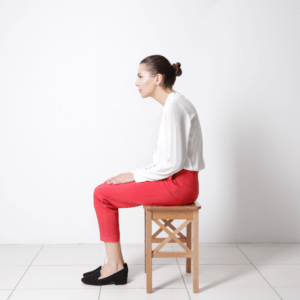How your breast/bottle feeding posture affects you
We see a lot of expectant mothers 🤰 and new mums 🤱 at Inspired Health Chiropractic. This is an exciting time! Whether you’ve decided to breast or bottle-feed 🍼 your baby, you probably already know that being in the incorrect position for too long can cause aches and pains.
We’ve spoken before about the importance of good posture and how poor posture can affect just about every aspect of your wellbeing. Poor posture while breastfeeding can throw your body out of alignment too 😓.
We know that you have a lot to juggle 🤹♀️ and many other concerns when it comes to feeding your baby, but here’s how the correct posture while nursing can really help you.
It reduces stress on your Bbody
When feeding your baby, you are most likely to be spending hundreds of hours in the nursing position. Nursing can leave your neck, back, wrists, and even your fingers feeling sore, so the correct posture can help reduce aches and pains.
Increased energy
Using the correct posture while feeding your baby can help reduce exhaustion 😴 as your body doesn’t have to heal your aches and pains from being in an uncomfortable position for too long. And, let’s face it, when you’re a new mum you need all the energy you can get!
It affects your recovery
Great feeding posture can have a big effect on how you recover from having a baby. It can support your pelvic floor from recovering from both natural birth and a cesarean 🤰 and take the strain away from your spine.
A useful posture for breastfeeding
- Here are our top tips for making sure you have the correct posture while feeding your baby:
- Start by bringing your baby to your nipple, not your nipple to your baby. Using a rolled-up, soft towel to raise your baby’s head is a nifty way to help.
- Focus on your shoulders and keep them relaxed. Try using a pregnancy pillow to rest the baby on instead of crossing your legs to rest the baby on. This properly supports your arms, neck, and back and prevents tension.
- We know it’s tempting but and have breaks from looking down for the entire feed. This supports your neck and shoulders.
- Sit up as straight as you can, especially if you’re in bed or on the couch. This reduces stress on your back and neck. Sit all the way back in the chair or place a pillow behind you for support. This relieves any pressure you may be putting on your back. Your feet should always be flat on the floor.
- Switch up the position in which you are feeding and change sides regularly. Long periods of sitting in the same position can put a strain on your connective tissues and joints.
Things to remember
Now that you know what the aspects are of the correct feeding posture, there are a couple of things you can take into consideration to ensure that you remain in a healthy position while nursing your little one:
- Gather everything you need before you start breastfeeding. Think about what you’d like to drink 🥛, snacks 🥗, your phone 📱 or tablet, TV remote 📺, nipple cream, muslins, etc. This way, you don’t have to try to get up while holding your baby in the feeding position which can injure your back.
- Make sure you drink lots of water to reduce the risk of constipation if you are breastfeeding!
How we can help
We’re experts in posture! During your visit to Inspired Health, we will help you work on the best feeding posture to suit you, your baby, and your lifestyle.
Through various chiropractic techniques, we can also work on treating the effects of poor feeding posture on your body and get you balanced again. We can also help you by providing exercises for you to strengthen your back, shoulder, and neck muscles which will take you no time at all.
To book an appointment with us, call 01245 699 152 or click here to get in contact.





